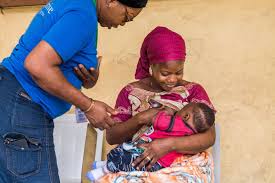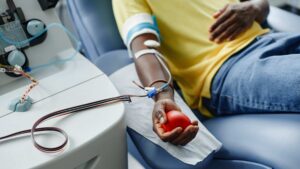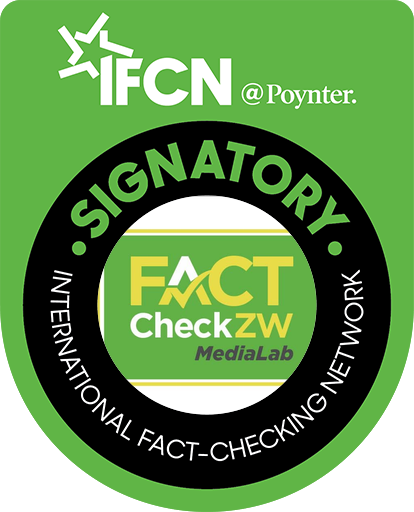The World Health Organization has declared Mpox, an infectious disease caused by the monkeypox virus, a global health emergency following a surge of cases in Africa.
The declaration follows Mpox outbreaks in 12 African nations, including the Democratic Republic of Congo, Uganda, Rwanda, Burundi, the Central African Republic and other nations
Mpox, also known as monkeypox, is an infectious disease triggered by the monkeypox virus, a member of the Orthopoxvirus genus. The virus is capable of causing a painful rash, fever, and swollen lymph nodes. While most individuals recover completely, a minority may experience severe illness. Mpox can affect anyone and is transmitted through contact with infected individuals, animals, or contaminated objects.
Types of Mpox
Mpox comes in two distinct types: Clade I, which was previously known as the Congo Basin Clade, and Clade II, which was formerly known as the West African Clade.
Clade I — Clade I mpox is the more severe disease. It’s more contagious than its counterpart and causes more severe illness and death.
Clade II — Clade II is less severe.
Transmission
The transmission of Mpox between humans can occur via:
- Direct contact with infectious skin or lesions, including those on the mouth or genitals.
- Proximity during face-to-face interactions, such as talking or breathing.
- Physical contact, including touching or sexual activities.
- Respiratory droplets or short-range aerosols resulting from extended close contact.
Additionally, certain animals, including squirrels and monkeys, may transmit Mpox to humans under specific circumstances.
Signs and Symptoms
Symptoms of Mpox typically manifest within one to three weeks post-exposure. Commonly observed symptoms include:
- A rash that progresses from itchy and painful stages to fluid-filled blisters and eventually scabs.
- Fever
- Sore throat
- Headache
- Muscle aches
- Back pain
- Low energy levels
- Swollen lymph nodes
Treatment
The primary diagnostic method is Polymerase Chain Reaction (PCR) testing, which detects the virus’s genetic material in samples taken from skin lesions.
The goal of treating mpox is to take care of the rash, manage pain and prevent complications. Early and supportive care is important to help manage symptoms and avoid further problems.
Getting an mpox vaccine can help prevent infection. The vaccine should be given within 4 days of contact with someone who has mpox (or within up to 14 days if there are no symptoms).
It is recommended for people at high risk to get vaccinated to prevent infection with mpox, especially during an outbreak. This includes:
- health workers at risk of exposure
- men who have sex with men
- people with multiple sex partners
- sex workers.
Persons who have mpox should be cared for away from other people.
WHO has been taking stock of global supplies, there are about 500,000 doses of the MVA BN vaccine, the smallpox-mpox vaccine made by Bavarian Nordic under the Jynneos brand, with another 2.4 million doses that could be produced by the end of the year if there are orders. The company said it could produce another 10 million doses in 2025. There is a second mpox vaccine called LC16, which isn’t commercially available but with considerable supplies in Japan’s stockpile.
Prevention
Most people with mpox will recover within 2–4 weeks. Things to do to help the symptoms and prevent infecting others:
Do
- Stay home and in your own room if possible.
- Wash hands often with soap and water or hand sanitizer, especially before or after touching sores
- Wear a mask and cover lesions when around other people until your rash heals
- Keep skin dry and uncovered (unless in a room with someone else)
- Avoid touching items in shared spaces and disinfect shared spaces frequently
- Use saltwater rinses for sores in the mouth
- Take sitz baths or warm baths with baking soda or Epsom salts for body sores
- Take over-the-counter medications for pain like paracetamol (acetaminophen) or ibuprofen.
Do not
- Pop blisters or scratch sores, which can slow healing, spread the rash to other parts of the body, and cause sores to become infected; or
- Shave areas with sores until scabs have healed and you have new skin underneath (this can spread the rash to other parts of the body).
To prevent spread of mpox to others, persons with mpox should isolate at home, or in hospital if needed, for the duration of the infectious period (from onset of symptoms until lesions have healed and scabs fall off). Covering lesions and wearing a medical mask when in the presence of others may help prevent spread. Using condoms during sex will help reduce the risk of getting mpox but will not prevent spread from skin-to-skin or mouth-to-skin contact.
History
Monkeypox virus was discovered in Denmark,in 1958, when two outbreaks of a pox-like disease occurred in colonies of monkeys kept for research. Despite being named “monkeypox” originally, the source of the disease remains unknown.
Scientists suspect African rodents and non-human primates (like monkeys) might harbor the virus and infect people.
The first human case of mpox was recorded in 1970, in what is now the Democratic Republic of the Congo. In 2022, mpox spread around the world. Before that, cases of mpox in other places were rare and usually linked to travel or to animals being imported from regions where mpox is endemic.
The World Health Organization renamed the disease in 2022 to follow modern guidelines for naming illnesses. Those guidelines recommend that disease names should avoid offending cultural, social, national, regional, professional or ethnic groups and minimize unnecessary negative effects on trade, travel, tourism or animal welfare. The virus that causes it, still has its historic name, however.











